As summer turned to winter, Tom Donhou of Donhou Bicycles and good friend, and photographer, George Marshall gave themselves five days to travel south to north through the harsh Icelandic interior: travelling unsupported across lifeless gravel roads, glacial river crossings, bare lava tracks, and through driving rain and fierce wind storms. Their goal: Akureyi – the capital of the north. The purpose: to take Tom’s new DSS2 adventure model on its final and most trying test before production.
George shot two sets of photographs: one digitally and one on a battered 35mm film camera, complete with buckets of grain, and light leaks. Low-fi as they are, both Tom and George were in agreement that the film photographs gave a much more accurate impression of what it was like to actually to be there…
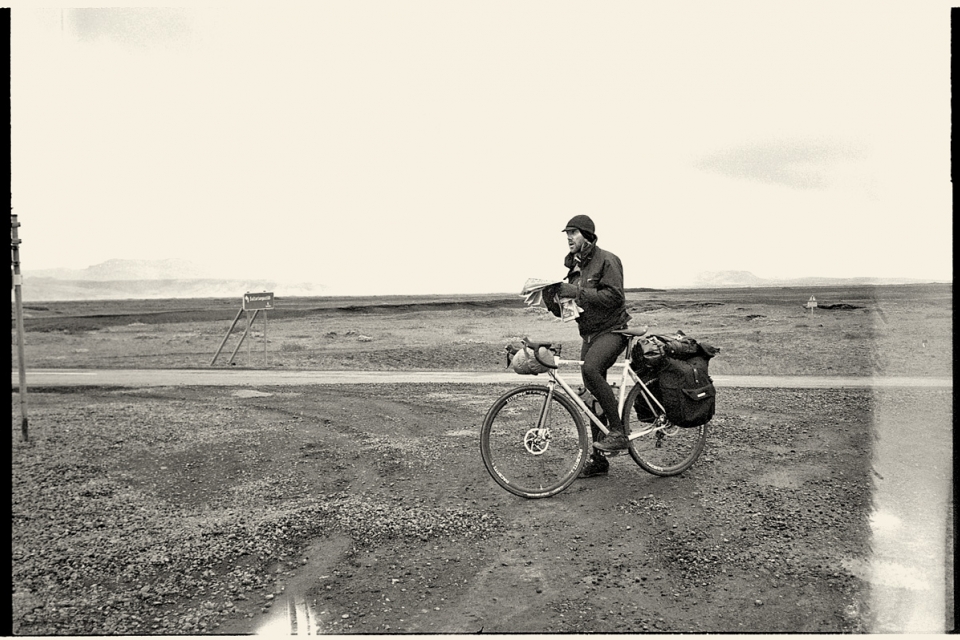
As we descended over the flat grey lava field that surrounds Keflavik airport, we got our first glimpse of what lay ahead. Wheels touch down, un-pack the bikes, drop off what you won’t need at left luggage, load the bikes and roll out. Life in your touring luggage and pockets: a week of not knowing what’s going to be thrown at you, where you’ll be sleeping, who you’re going to meet and what you’re going to see and feel…
We rode across that lava field adjusting to our new surroundings, the sun shining, tent on the rack, shirt-tails flapping. It felt real good.
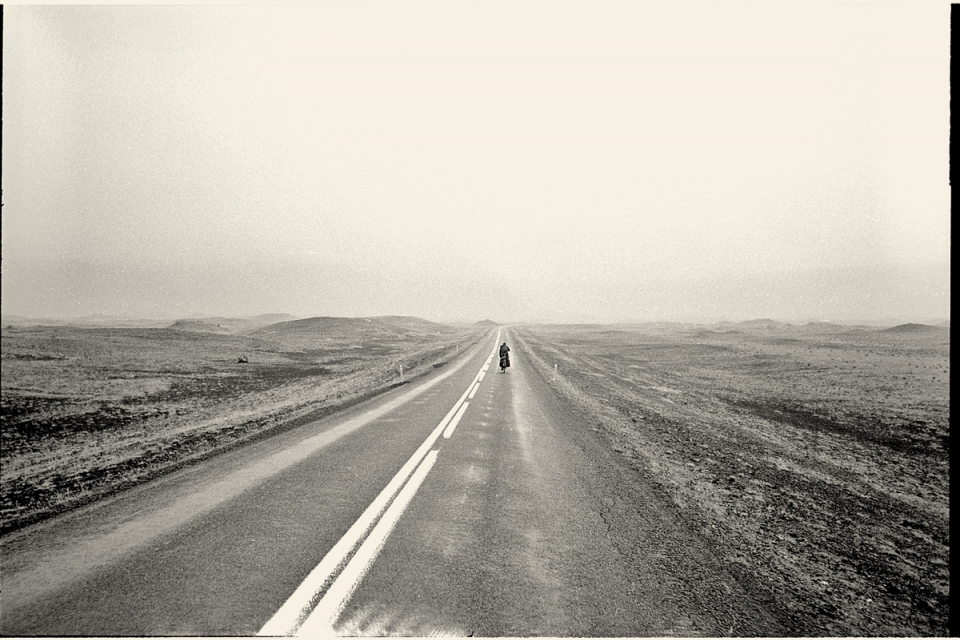
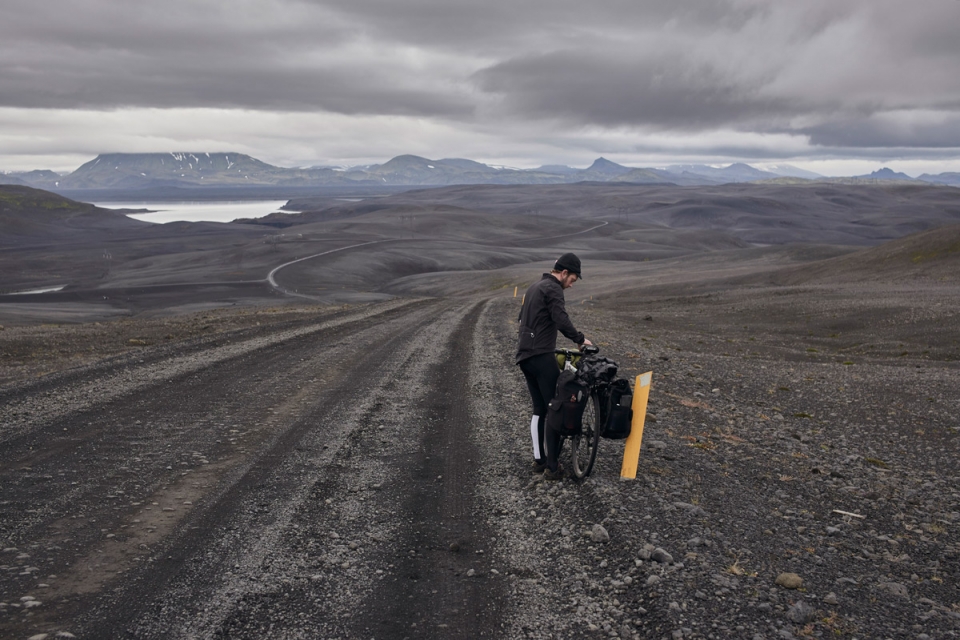
"...as the tarmac changed to gravel we turned onto the road we'd know for the next 3 days - the Sprengisandsleið - an ancient pass that fell out of use for over 600 years, desolate and isolated to the extreme, passable for only 2 month of the year..."
We camped up that night just the other side of Reykjavik, waking up to the sound of rain on our first morning – not heavy pounding rain, just thick dense drizzle. The 15% climbs up and over towards Pingvallavatn, kept us warm but definitely not dry; it wasn’t long until we’d wetted out.
Pausing at a remote, lonely, glass fronted luxury hotel to fill our bottles, we had a window into other people’s experience of this environment as they sat in the warm, dry, contemporary viewing area. I had that same feeling I get when I’m sitting in a car on the motorway and a motorcycle comes past. You’re warm, dry and comfortable – the other guy is battling 70mph winds, isolated and literally holding on for his life. The Icelandic winds weren’t making this easy for us.
Rolling into the first town we’d seen since we’d left Reykjavik, we were a few hours late for lunch and the tanks were empty. We sat down and stripped off, hanging our clothes on various chairs to dry out in the service station. George said to me “I think that last 20km was the hardest of my life, I reckon I can take 3 days of that, tops.” Before we’d set off from the UK, we’d checked the weather and it didn’t look good. Knowing we wouldn’t have the luxury of service stations and civilisation for much longer, we were both nervous how long the rain would last for. Refuelled, we made use of the southwesterly
winds and a short 20km’s later we’d taken our left turn to start heading north, leaving the south behind….
We were now following the Þjórsá river, a massive, bulging flow which carried the snow and glacier melt out of the central highlands down to the south coast and out into the North Atlantic Ocean. Tracing the meandering river as the low grey clouds hurtled overhead, we watched the weather play out in time lapse; breaks of sun, pockets of rain – always checking over our shoulders. We felt the ever presence of the weather that danced and played all around us. Somehow we’d managed to stay dry.
Later that day as we pulled away from the last signs of civilisation we would see until we reached the North coast, the sign at the side of the road confirmed this – “next services 254km”. We reached a crossroads and as the tarmac changed to gravel we turned onto the road we’d know for the next 3 days – the Sprengisandsleið – an ancient pass that fell out of use for over 600 years, desolate and isolated to the extreme, passable for only 2 months of the year. Its name derived from the term “to ride your horse to death, to explode from exhaustion”; as one had to ride as fast as possible to cross the lifeless desert, nearly driving your horse to death in order to reach the fertile lowland pastures before starvation.
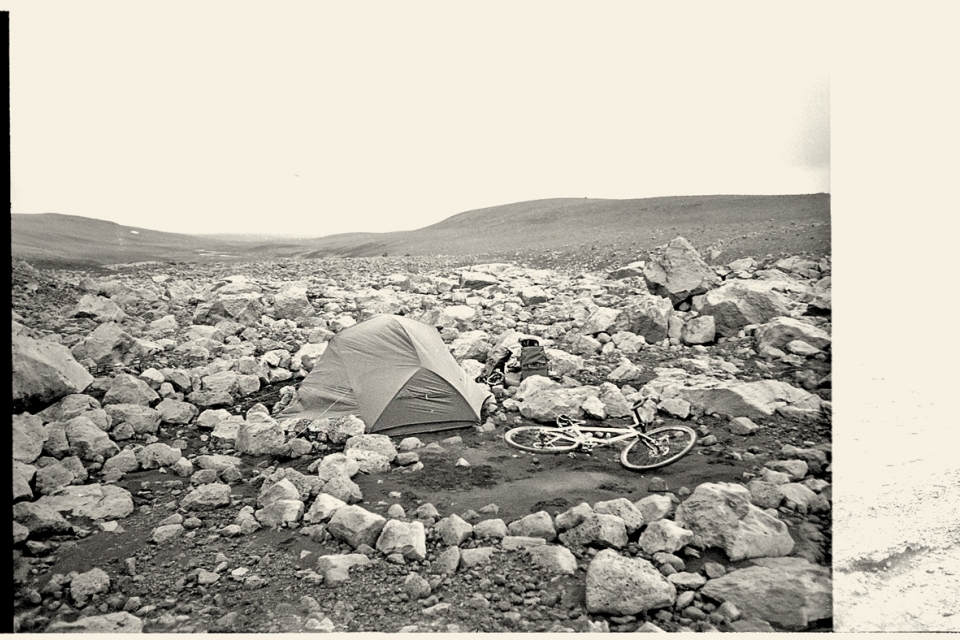
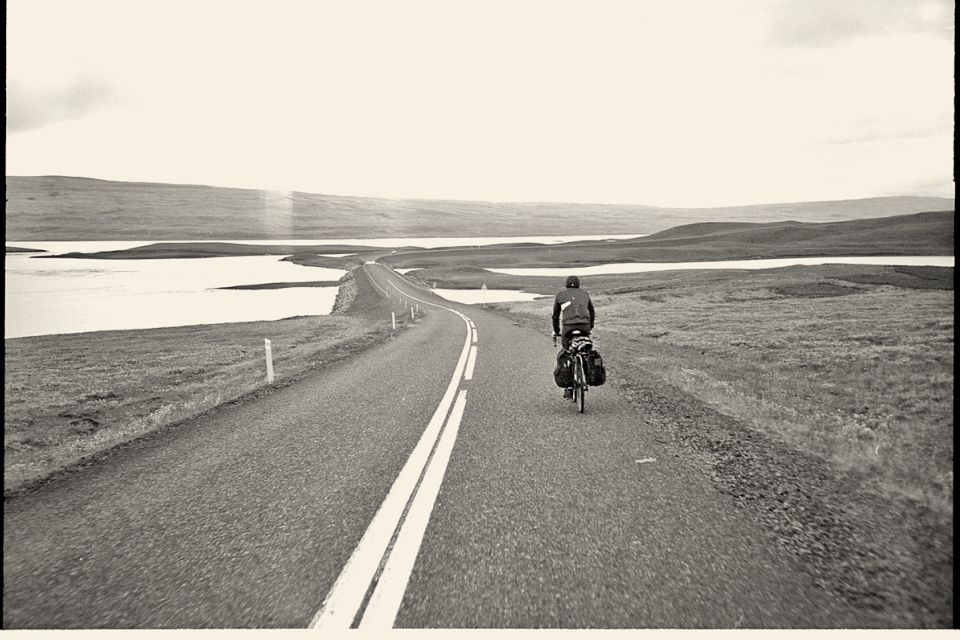
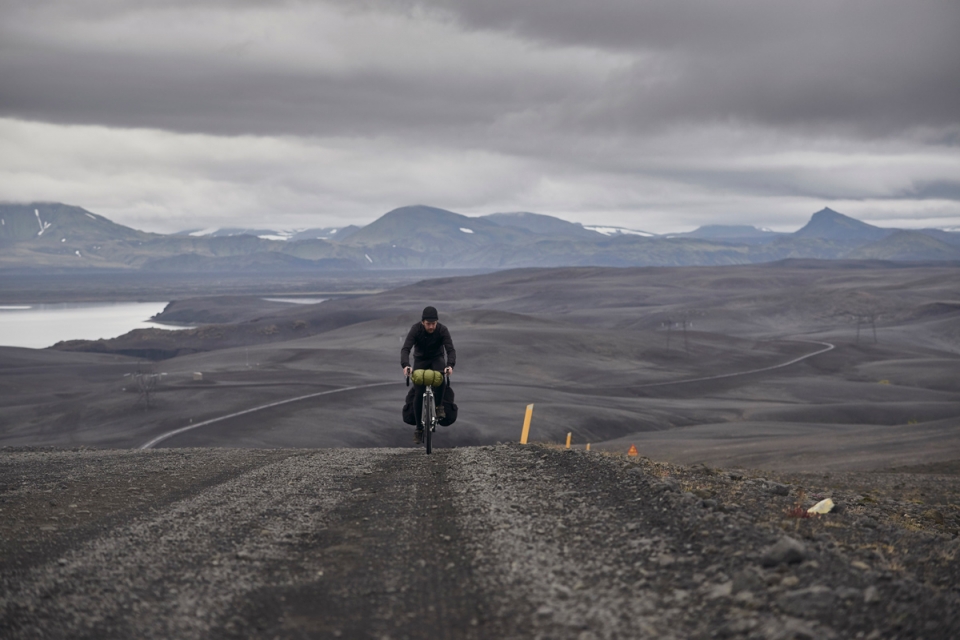
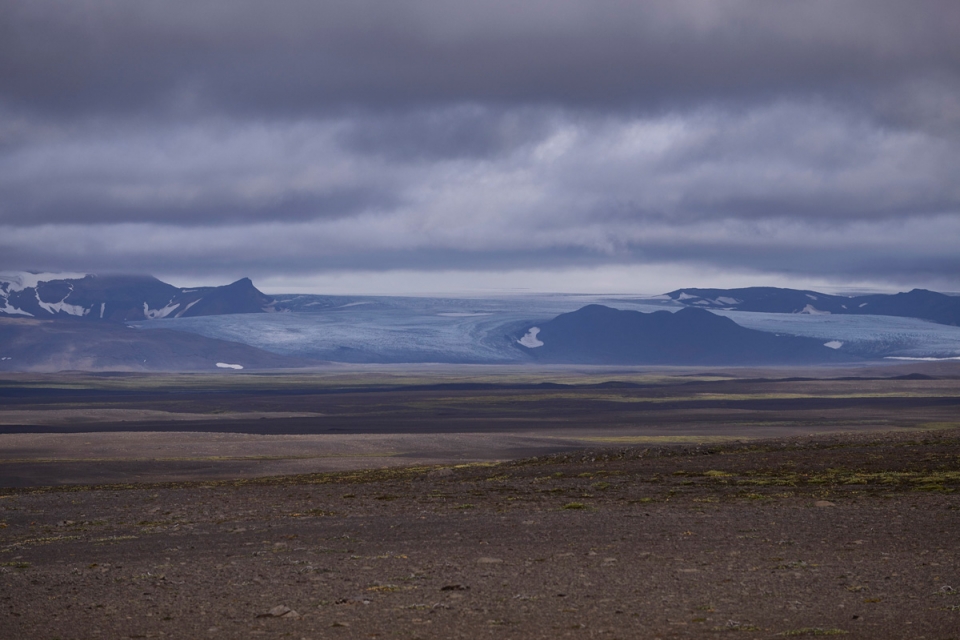
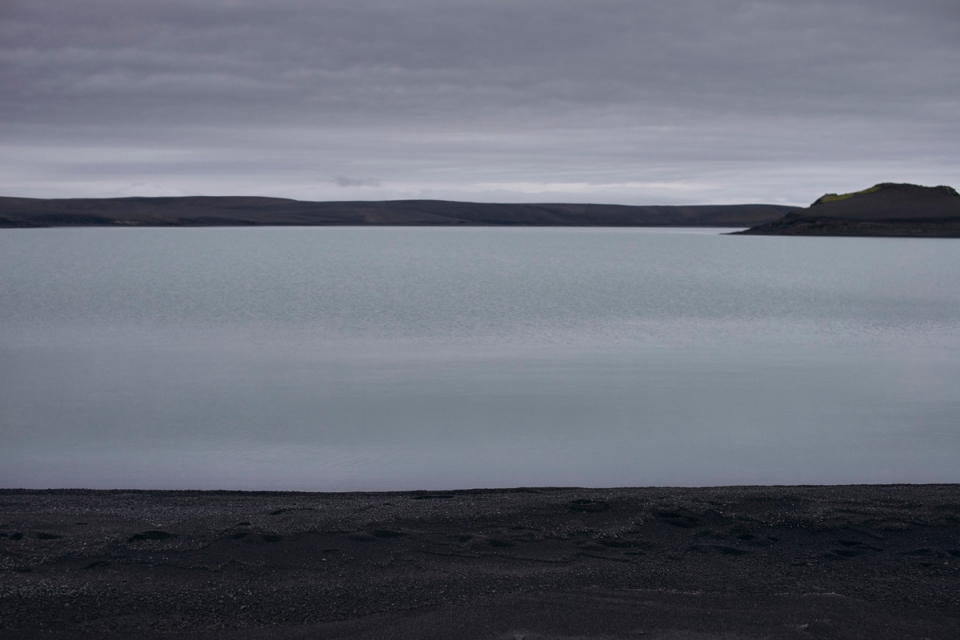
"...we pulled up to the shores of the stillest, most serene lake I have ever seen. Silver blue as the long dusk turned from daylight to moonlight. The carnage that had been unravelling around us had ceased; the skies had emptied. Time for a swim..."
It was true. In any hostile environment, one must move as quickly as possible and that we did as we climbed our way up onto the desert plateau. Having managed to evade the patches of rain that seemed to hurtle past us all day, we pulled up to the shores of the stillest, most serene lake I have ever seen. Silver blue as the long dusk turned from daylight to moonlight. The carnage that had been unravelling around us had ceased; the skies had emptied. Time for a swim…
We’d been dealt a breather, but as we travelled north the following day, sensing the weather breathing down our necks again, we were exposed and vulnerable. Keep moving. We pedalled on – the monotone landscape revealing the occasional flash of intense green as we crossed one of several forded rivers, where George and I were forced to get off and wade through the freezing water. More rocks, more grey, then again a flash of colour, this time a rainbow that had formed across the great expanse as we looked east over the Langjökull glacier: 100kms of frozen ice spewing around the Hagafell mountain.
With the wind now picking up again we stopped to find what shelter we could and discovered a small canyon with a spring. We topped up our bottles and with the rocks sheltering us enough to put the tent up, we cooked our pasta and tuna (the
staple of our trip) and settled down for the night. That wind never stopped picking up, and by the next morning we managed 12km in two hours. On the increasingly rock strewn track, we’d suffered 4 successive punctures, a large river crossing and had been blown off the bikes several times. The wind was now blowing at around 50mph. Fast enough to make any task extremely difficult and potentially dangerous in the vast unsheltered desert.
Bang in the centre of Iceland between the Hofsjökull and Vatnajökull glaciers lies Nyidalur: a lonely mountain hut offering shelter for weather-beaten travellers. We pulled in to check in with the Ranger and let them know our plans. I walked into the toasty wooden cabin, immediately noticing the quiet away from the white noise that had been hammering us for the past days. A woman walks out from a door; the Ranger. “Heading north” I say. Very quickly she warns us a storm is approaching, explaining, “these winds you have experienced are nothing compared to what will come through the night”. Being fools not to heed her advice, we took shelter and watched the storm blow in. That night as we slept in the roof of the small wooden hut, the wind beat down hard, pushing in the walls and trying to get its wispy claws up under the corrugated tin roof. It never ceased…
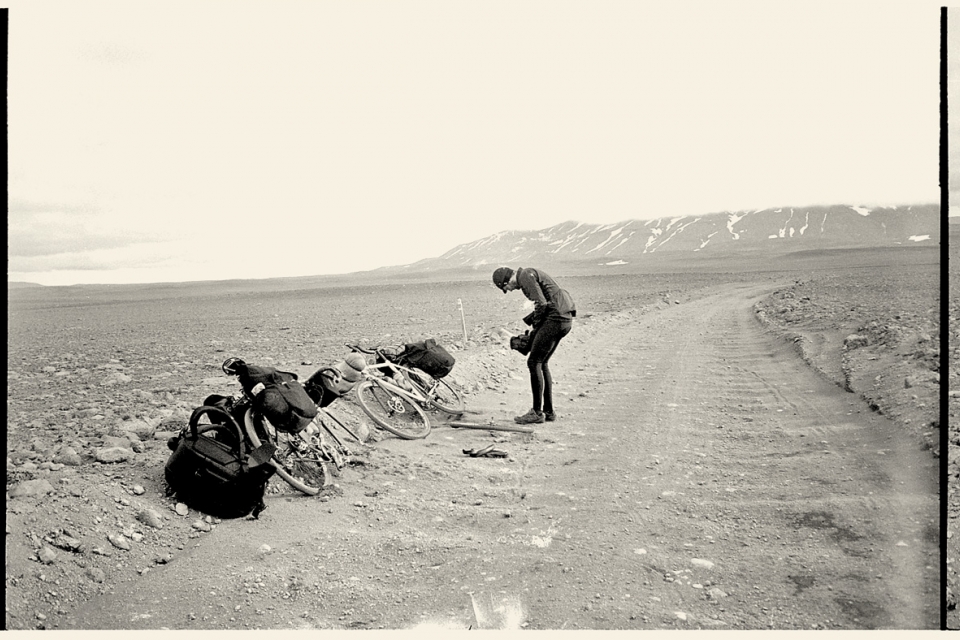
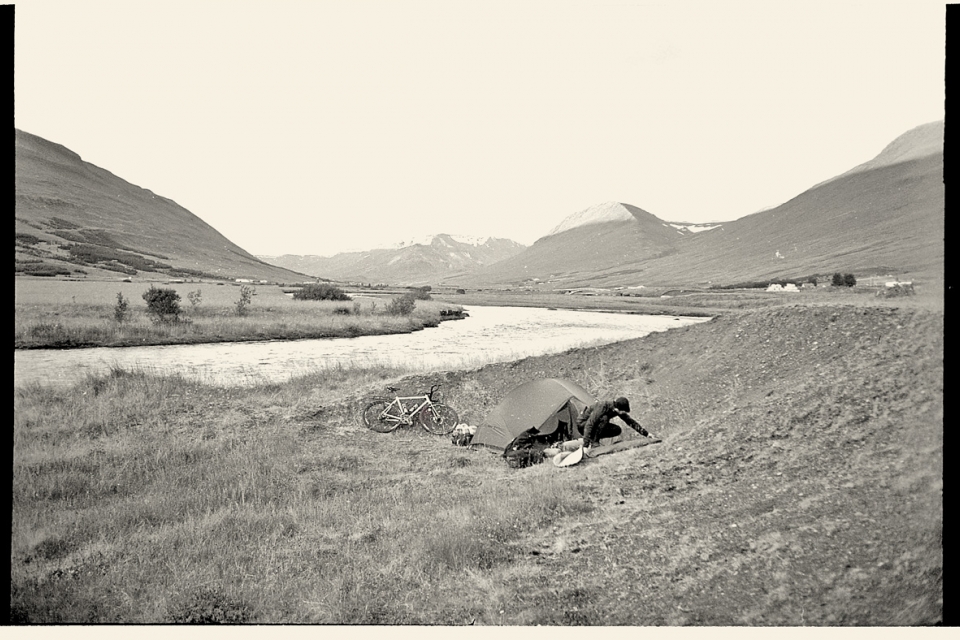
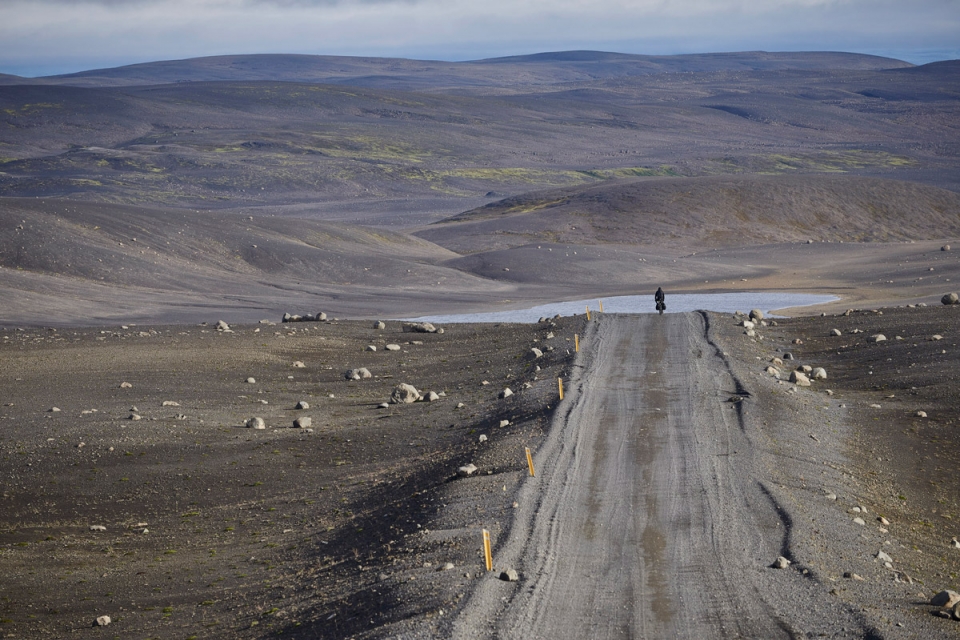
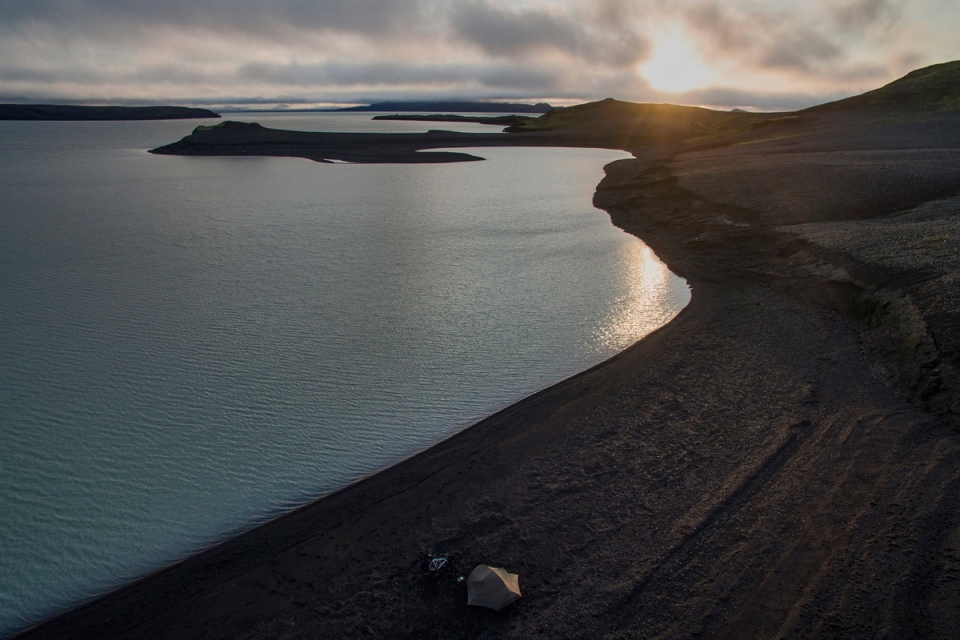
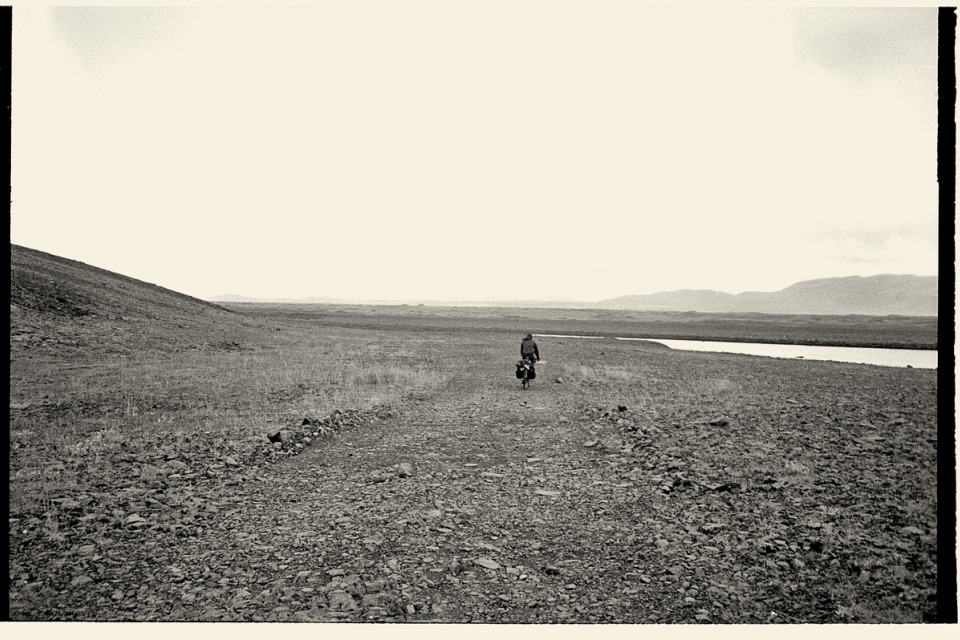
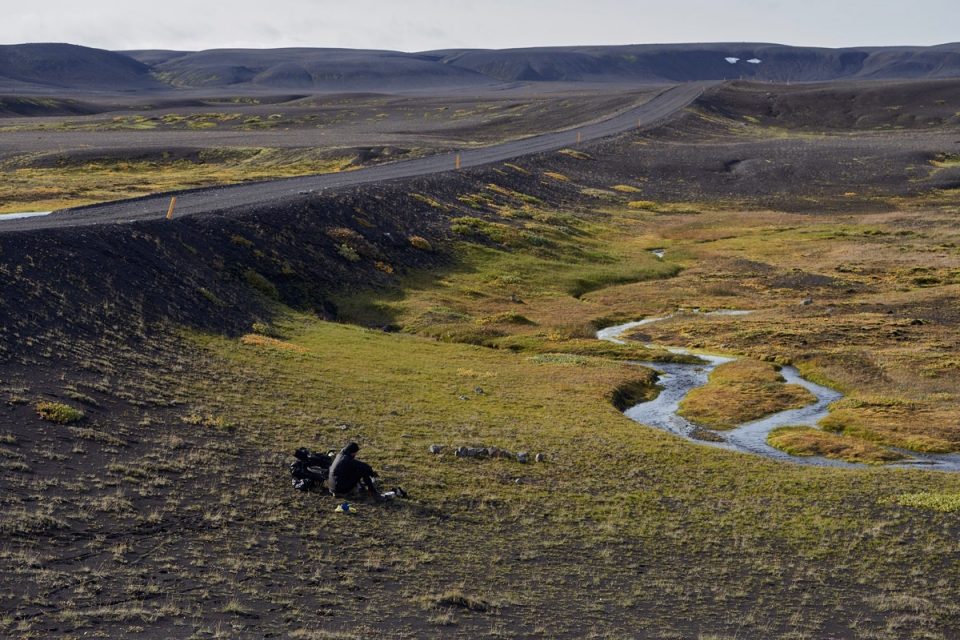
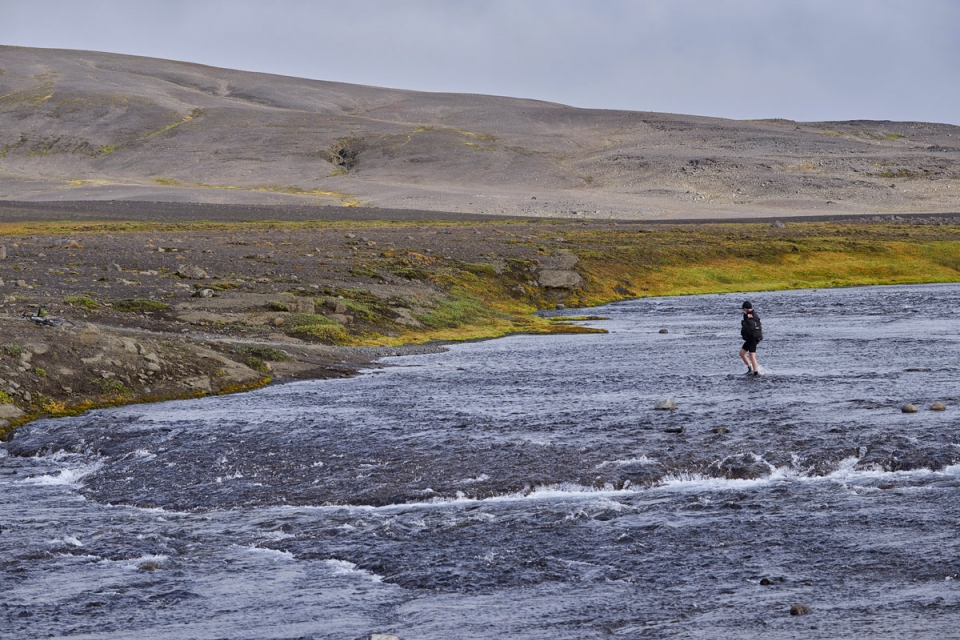
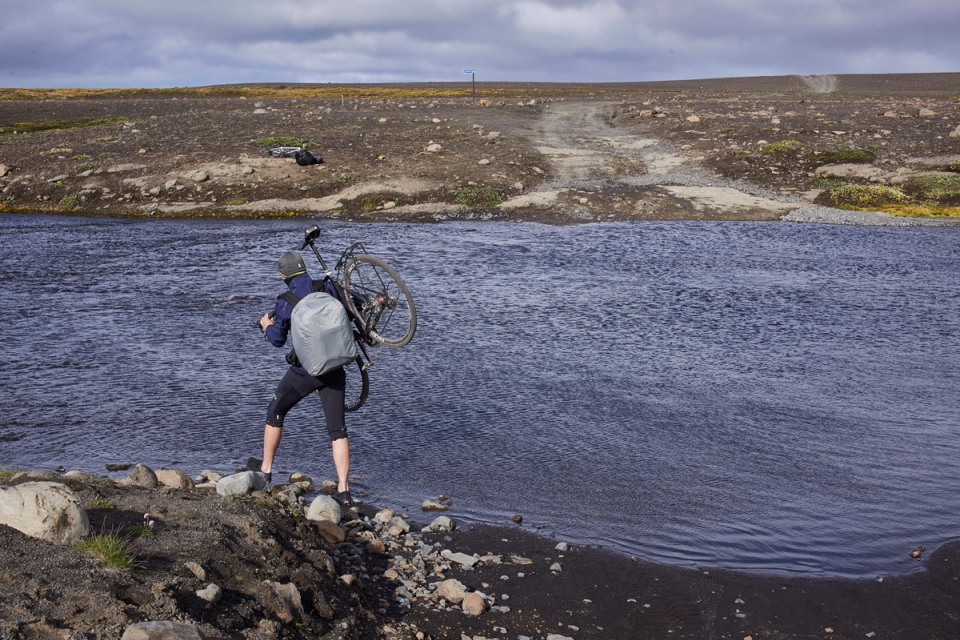
…and that is when you get taught a lesson: that your goals are nothing; the week-long trip you’d been dreaming about and planning for months is nothing; ride as hard as you like, but you play by the wild’s rules. Running on London time, you feel silly to think that you can cross such an environment in any given time scale. The Iceland interior really offers the opportunity to sense your insignificance: exposed to the vast, wild landscapes you take a breath, you learn how to wait and to appreciate the now, not some goal in the future you are chasing.
Two days later we rolled down off the plateau – we saw horses, grass, colour and life again. We set up camp back up towards the desert and could see the heavy storm front looming tall and grey. We ate and washed in the river as the sun went down; just a short roll to Akureyi in the morning and the northern Norwegian Sea…
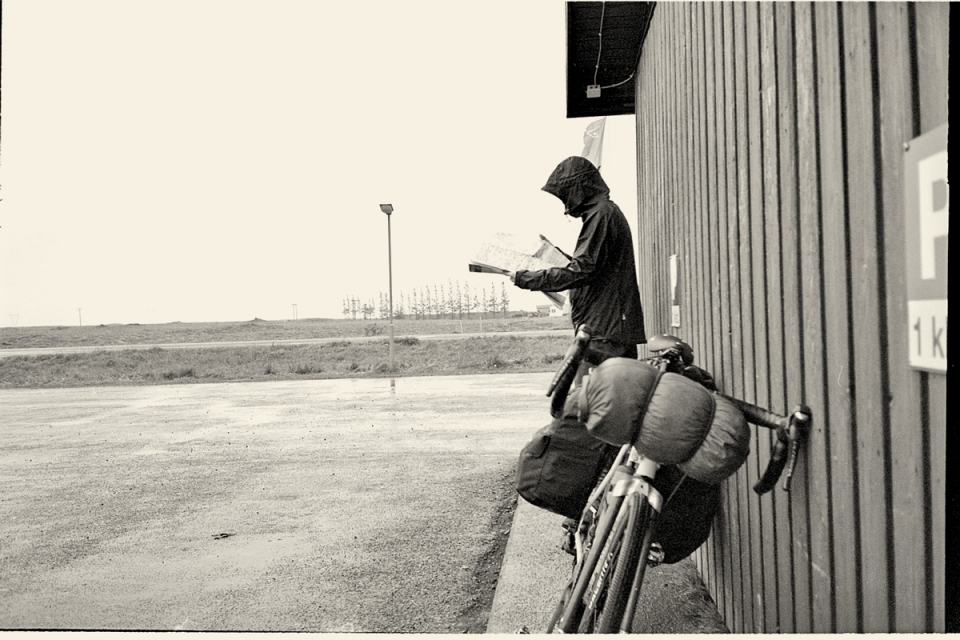
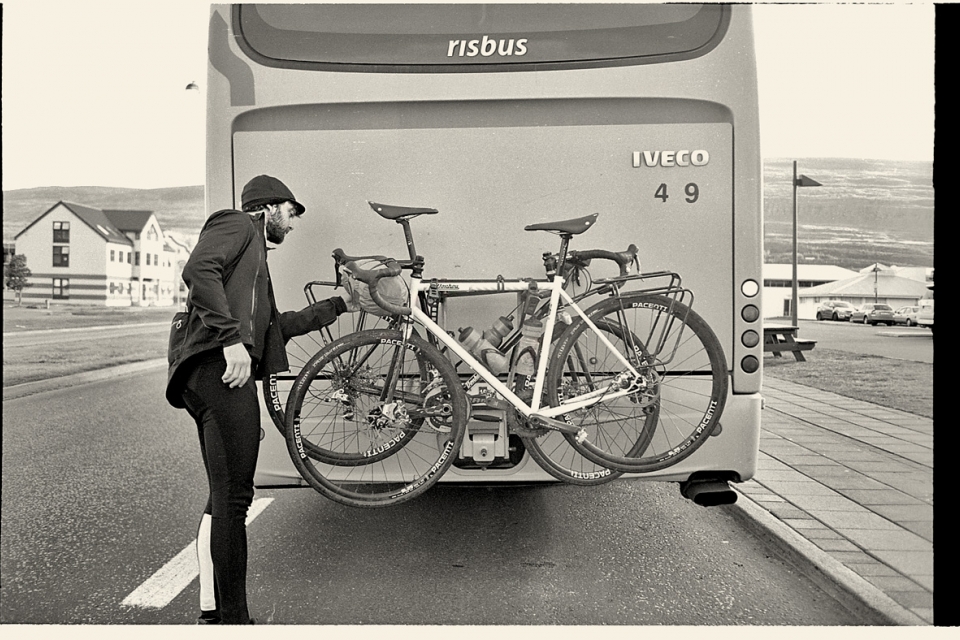
Tom Donhou & George Marshall
@donhoubicycles
@georgemarshall
The Donhou DSS2 Tour & Gravel Bike
“DSS”: Donhou Signature Steel
At home on the tarmac, but built with detours off the beaten path in mind, the DSS2 will adapt to road, gravel or loaded touring so all you have to do is choose the adventure. After miles of testing on and off road here in the UK, in addition to this Icelandic Interior tour for its last and most trying test, Donhou Bicycles began production as soon as they arrived back home.
The frame is hand-built by Donhou in Reynolds 853 (their highest quality, highest strength seamless air-hardening steel) and top-end componentry specification includes: Shimano Ultegra; Chris King; Thompson; Hope; and Fizik.
Find more about the DSS2 bike over on the Donhou Bicycles website…
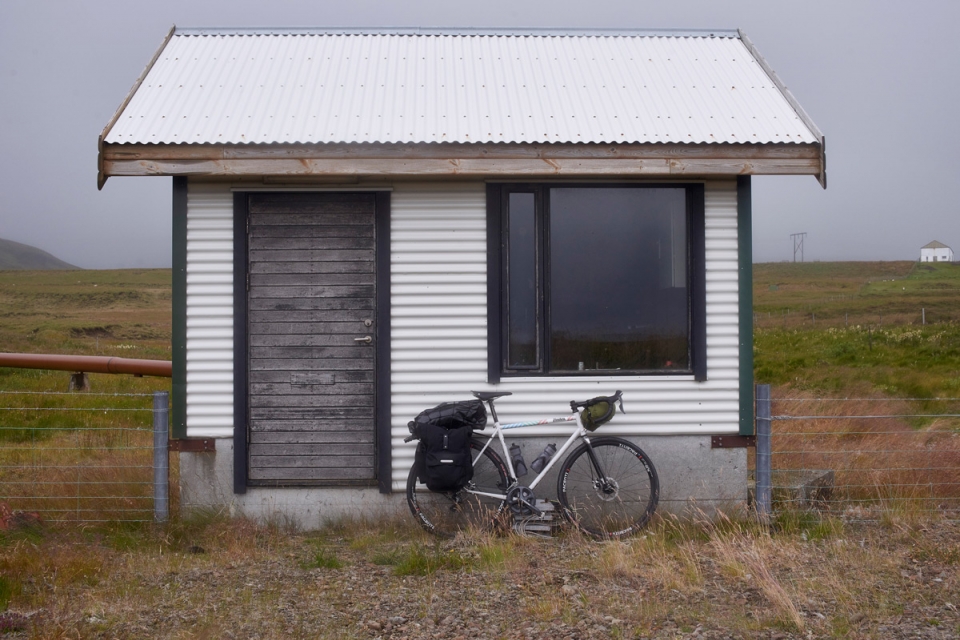
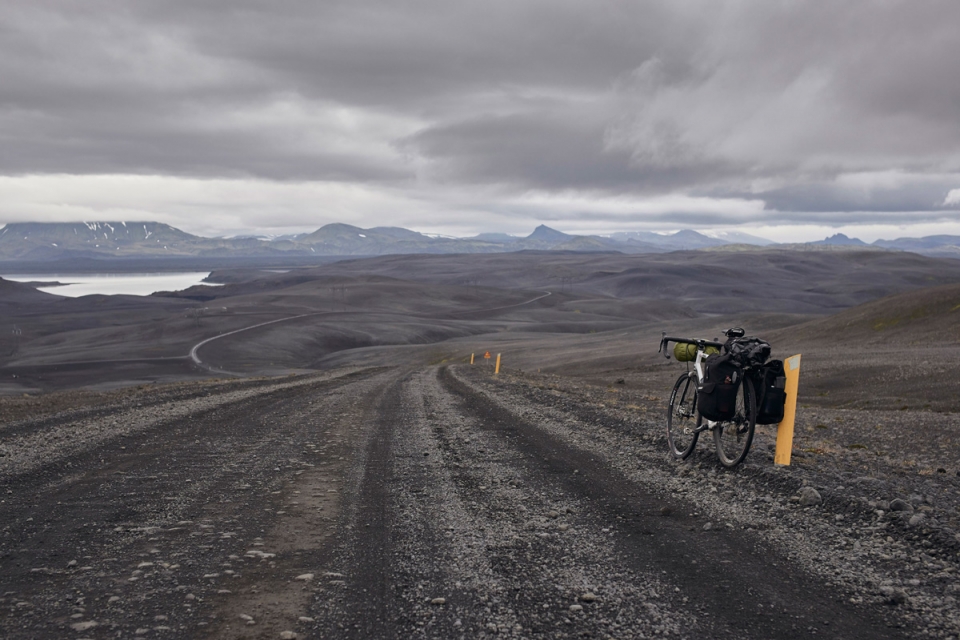
Pannier supplied Tom and George with everything they needed for sleeping out overnight on their unsupported touring adventure:
Tent | MSR: Hubba Hubba NX
Sleeping Mats | Thermarest: NeoAir XTherm
Sleeping Bags | Rab: Neutrino 200